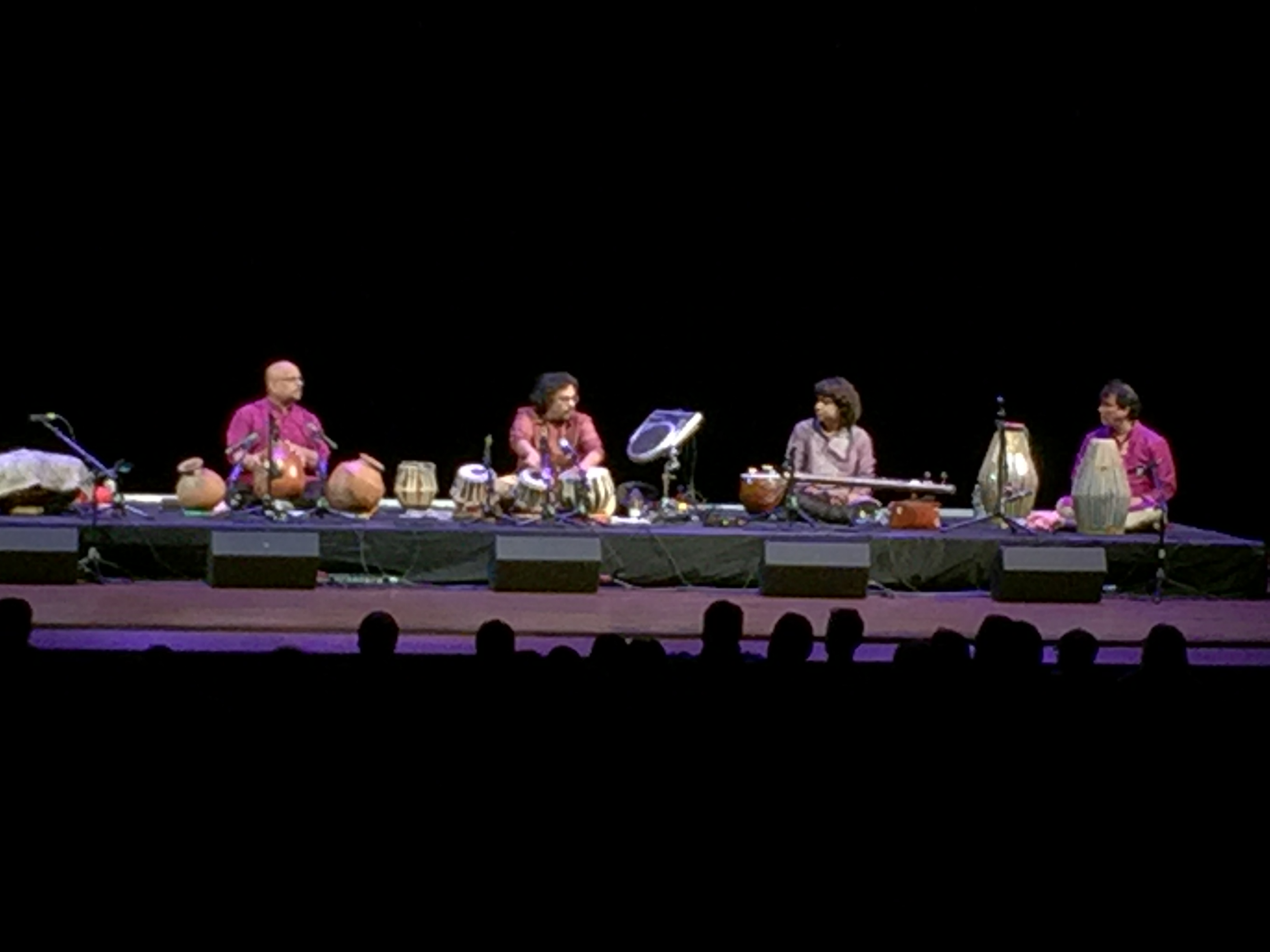
Bickram Ghosh’s Drums of India filled the Weis Center with captivating rhythm and melodies on Sunday, October 16th. Ghosh was joined by Anoor R. Ananthakrishna Sharma, Gopal Barman, Suresh Vaidyanathan, and Abhisek Mallick, all of whom are celebrated musicians worldwide.
One of the most interesting elements of the performance is the fact that most of it was improvised. Ghosh explained to the audience that improvisation is typical of drumming in India, jokingly adding that things could go wrong at any moment. Nothing ended up going wrong during the concert, however, from my perspective; the music sounded and felt thoughtful yet natural.
Ghosh primarily played the tabla, a set of drums in varying sizes that produce different tones, although he also plays the kanjira, a frame drum that is part of the tambourine family. While the stage was filled with beautiful percussion instruments, the ghatam struck me as particularly unique. This instrument consists of a clay pot with a narrow mouth, and the sound varies based on size. Vaidyanathan masterfully used several ghatam to produce a lighter and more high-pitched drumming that stood out from the accompanying instruments.
Aside from the drumming itself, the performance also featured a lesson in the language of music. Ghosh pointed out that music and sounds have their own vocabulary. In order to communicate certain sounds that his drums make, he mimicked the sounds with his mouth. Much to the audience’s surprise and delight, he and his band mates engaged in a full-on conversation in this musical language before translating their words into actual drumming.
Check out the Weis Center’s Instagram (@weis_center) for a short video clip from Drums of India.
~ Madeline Diamond, Class of 2017